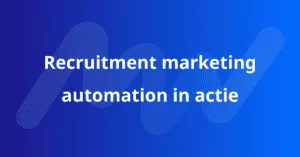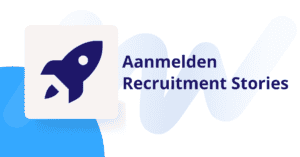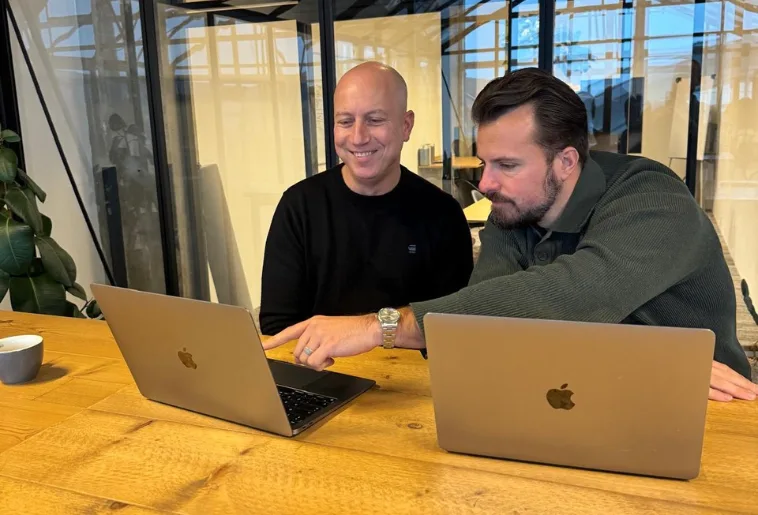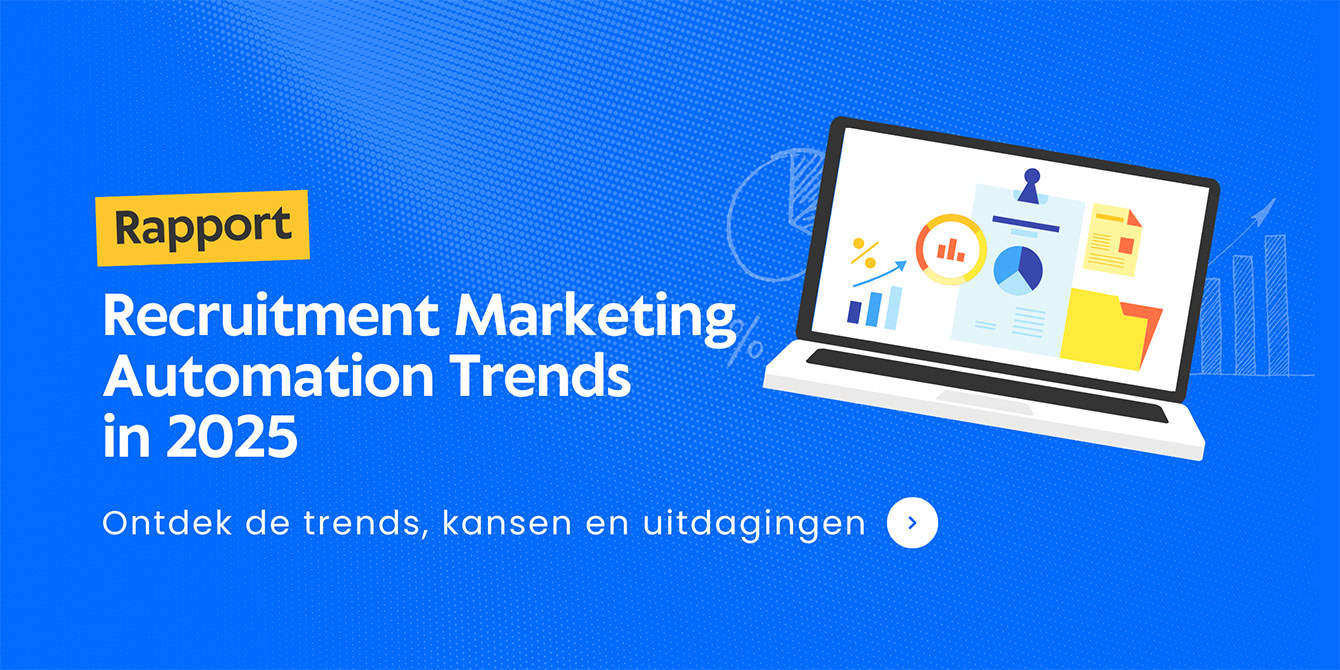Adding lead generation to your recruitment marketing strategy is incredibly valuable. Your conversion rate goes through the roof and candidates knock on your door instead of you having to chase them with multiple messages. The dream of every recruiter and an absolute boost for recruitment success. But that's only true if you take lead follow-up seriously. Does that take a lot of time? Or is it actually a snap?
Lead generation = time-saving
First, let's quash the assumption that following up on leads takes a lot of time. After all, it doesn't. We see just the opposite: the productivity of recruitment teams increases tremendously thanks to lead generation. That's because lead generation is a form of inbound recruitment marketing. Candidates come to you. In contrast, more traditional recruitment channels are mostly outbound. Now that the job market is full of latent candidates, recruiters working with outbound methods have to launch a huge number of actions to get candidates into their recruitment funnel. This takes a lot of time and the results often leave much to be desired.
With inbound recruitment marketing you get candidates to contact you themselves, for example in response to a campaign you are running or a job posting they have seen. With outbound recruitment methods, you as the employer approach the candidates. A well-known form of outbound recruitment is sourcing.
To illustrate this, let's take as an example an employer that mainly uses traditional recruitment channels. The conversion on a work-at-home site is - in the current labor market where the willingness to apply is very low - on average only 1% to 2%. In order to fill the recruitment funnel with candidates, a lot of sourcing is done. But because the response rates for sourcing are very low, you have to search, select and approach hundreds of candidates to finally get a few candidates to the table. That takes a lot of hours.
Once such an employer switches to a strong recruitment marketing strategy with lead generation, the conversion rate on the work-at-home site increases to 7% to 10%. Now suddenly candidates are contacting the employer themselves, without recruiters or sourcers having spent hours of time. That makes a big difference!
Lead generation = results booster
On top of that, the leads that come knocking on your door are of higher quality than the candidates you manage to convince through sourcing. This is because the leads have come to you from their own interest. So not only do recruiters spend less time filling the recruitment funnel, but the candidates in the funnel are also more involved and so the chance of a hire is much greater. Double the profit!
Following up on leads = just like that
But then when you suddenly receive so many leads, following up on them probably takes a lot of time? It's a concern many employers have who are just starting to use lead generation for recruitment. Fortunately, we can easily address that concern. That's because our lead generation tooling is built to take the worry out of your hands. With smart automation, following up on leads is a snap!
The purpose of our Leads environment is to centralize and automate 1-to-1 contact with candidates. You have all leads in one place and can therefore quickly and easily handle questions and initiate conversations. Thanks to automation, leads are served quickly, they get to the right person and you can even select them based on their qualifications.
For automations in following up leads, you can think of:
- Anopening message that automatically adapts to the day and time the candidate contacts you. For example, if someone asks a question over the weekend, you can use the opening message to let them know that you will get back to them on Monday.
- By the way, this opening message includes language recognition. Does someone send you a message in English, but is Dutch proficiency a must for the position? Then you can automatically ask this person about language proficiency and if the candidate is not suitable, reject them immediately. Automatically!
- With qualification questions, you can instantly check if a lead is a good fit for the job posting. For example, if someone applies for a job as a truck driver, you can ask them about their driving license. Based on the answers given, you can ask further questions or suggest other vacancies, such as to become a van driver. Does a candidate fit the vacancy well? Then you can immediately take the next step, for example by having the candidate make an appointment via Calendly. Candidates who do not have the right qualifications are automatically rejected. No human hand is involved in this entire pre-selection process.
- With questions about the candidate's interest (for example, what field or region the candidate wants to work in), you ensure that the lead is assignedto the right talent pool and followed up by the recruiter of that field or region. That saves another intermediate step!
In this way, recruiters are only concerned with relevant candidates. They spend their time and attention on leads that are genuinely interested and have a connection to the jobs. All non-matching leads are handled automatically. You set up these automations once and then the software does the work for you!
By the way, you don't have to worry that these automations make contact with candidates impersonal. You can make welcome messages, qualification questions and interest questions as personal as you like! Besides, most candidates just like to know where they stand quickly. And this is how you arrange it.
Adding lead generation to your recruitment strategy = smart
In short, with lead generation you are going to recruit more efficiently and effectively. Following up on leads is a snap, because automations already take a lot of work away. This allows the recruitment team to focus on the best candidates!








